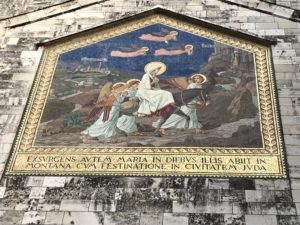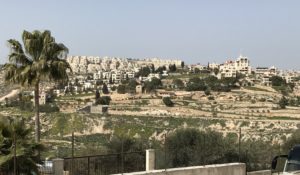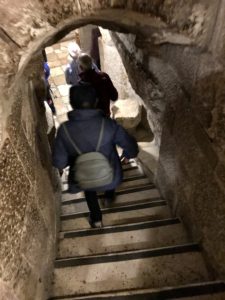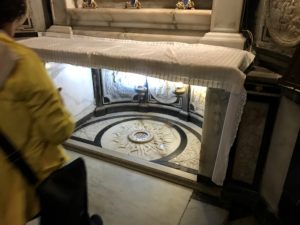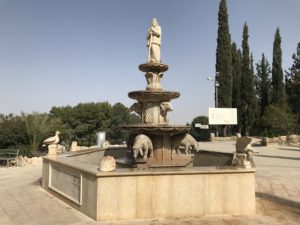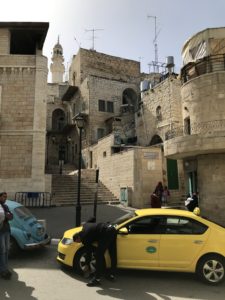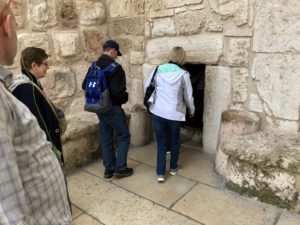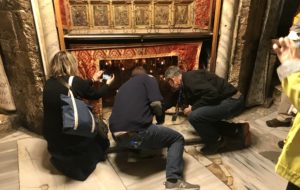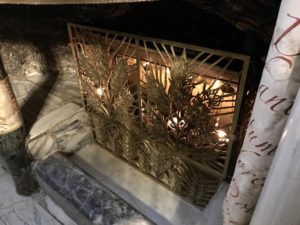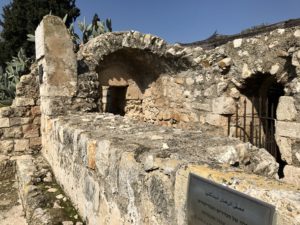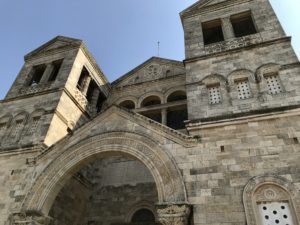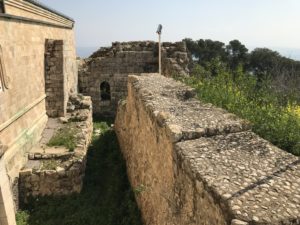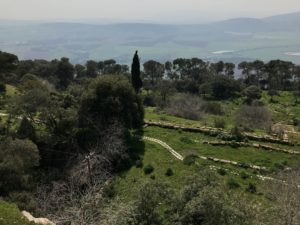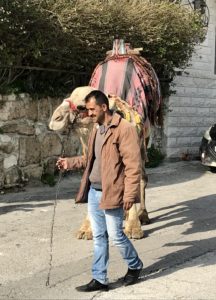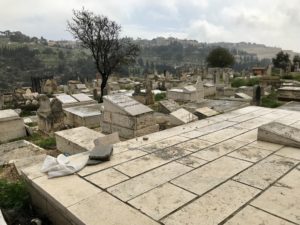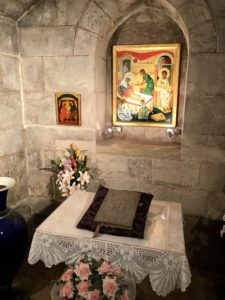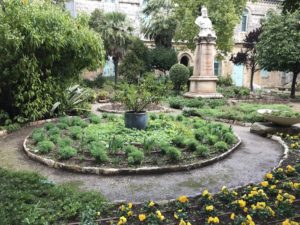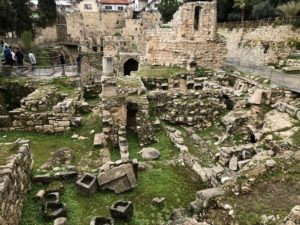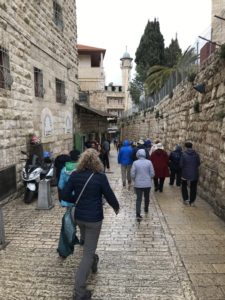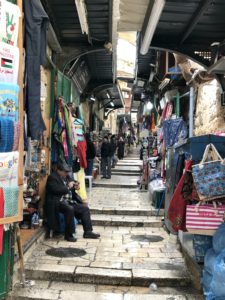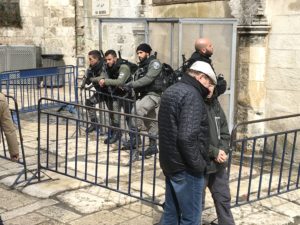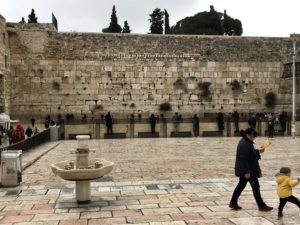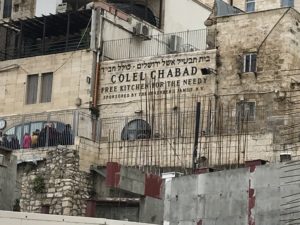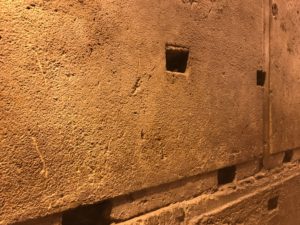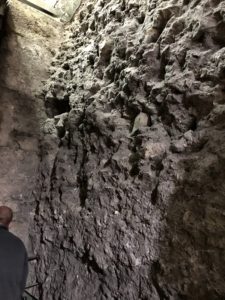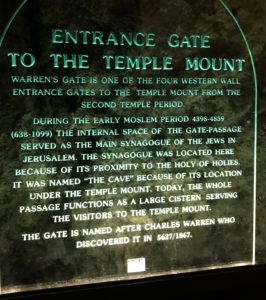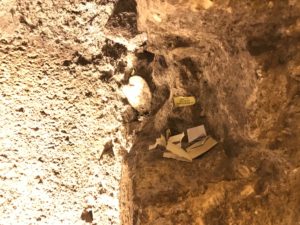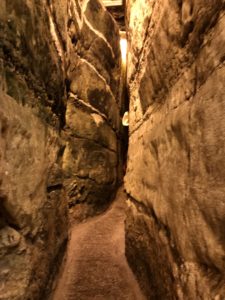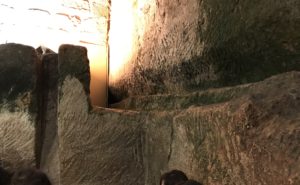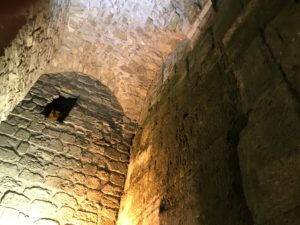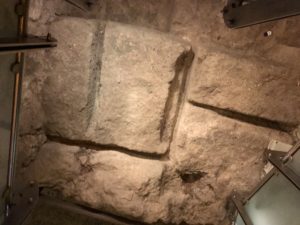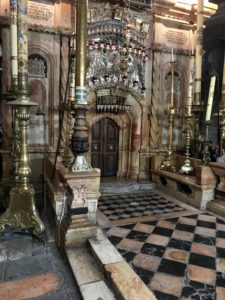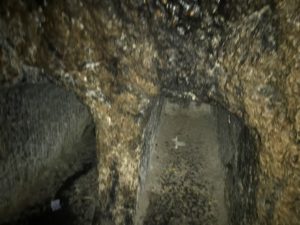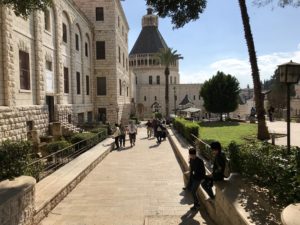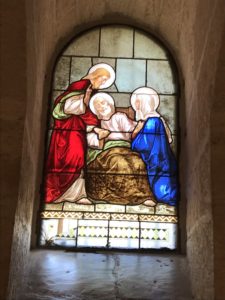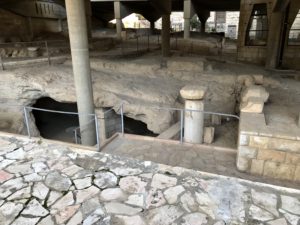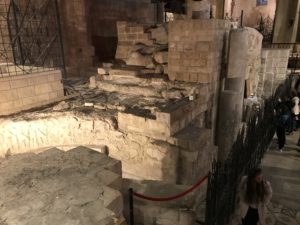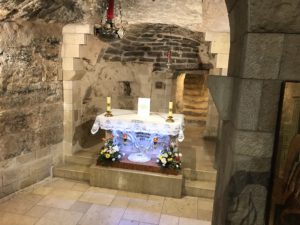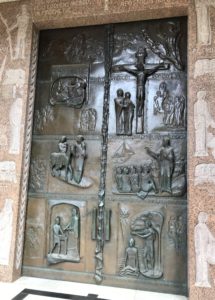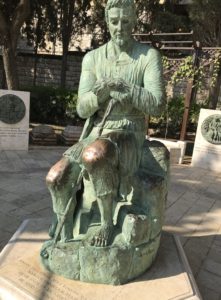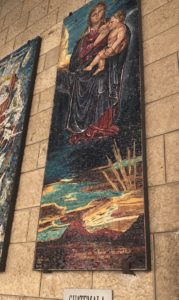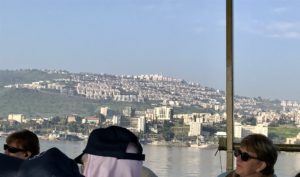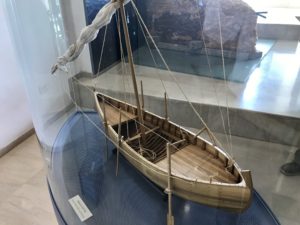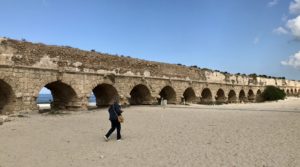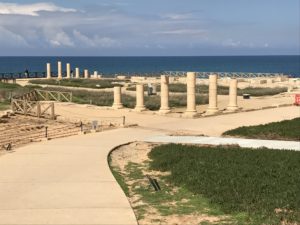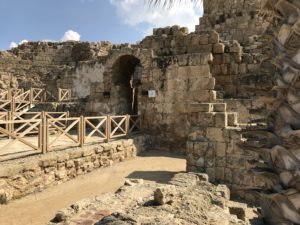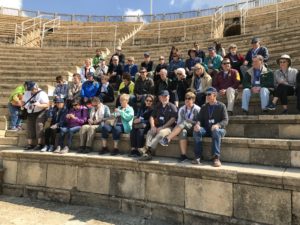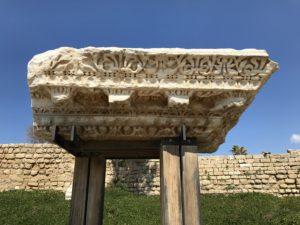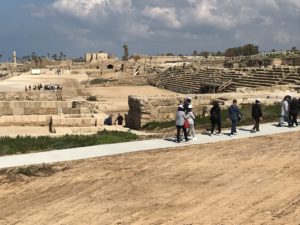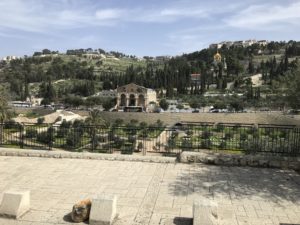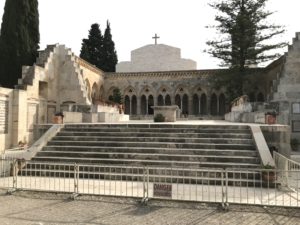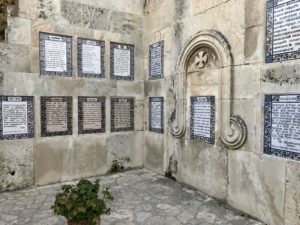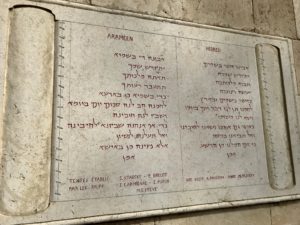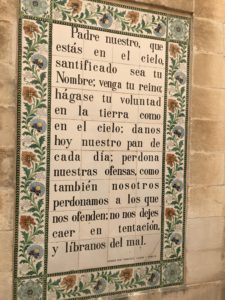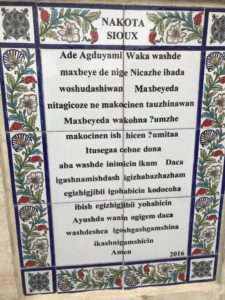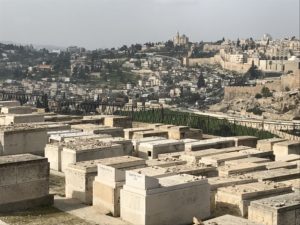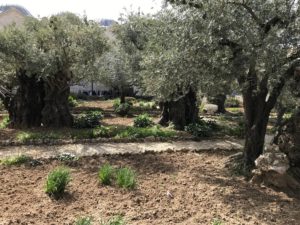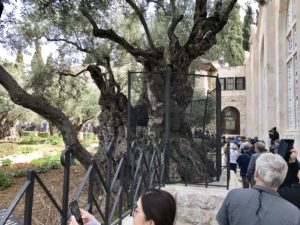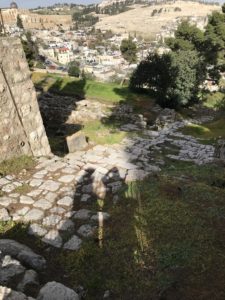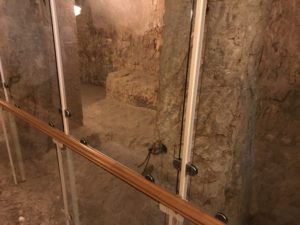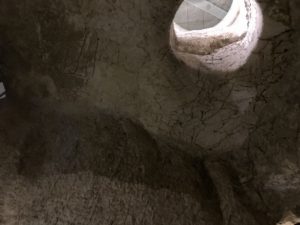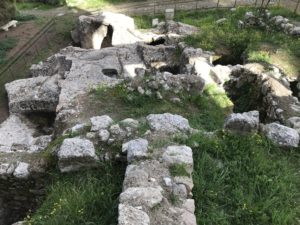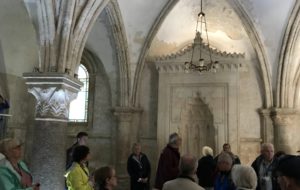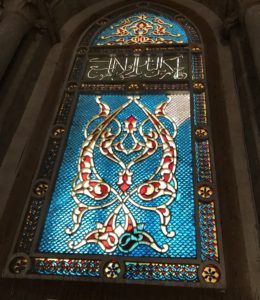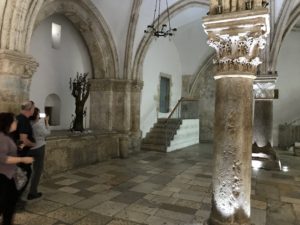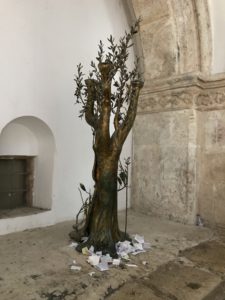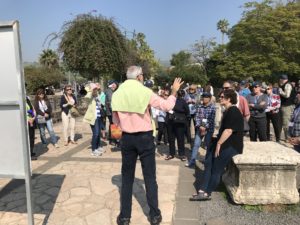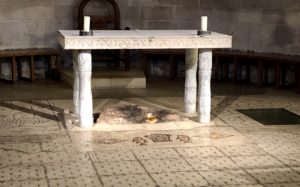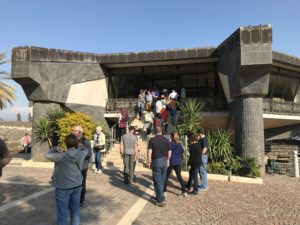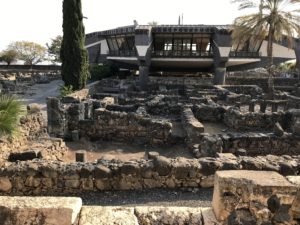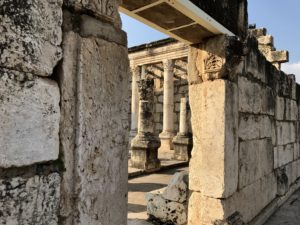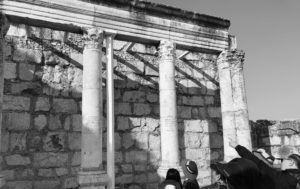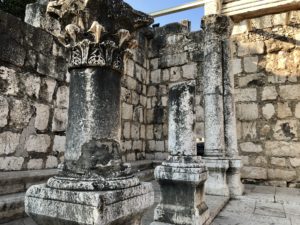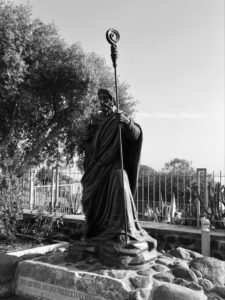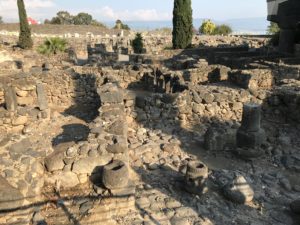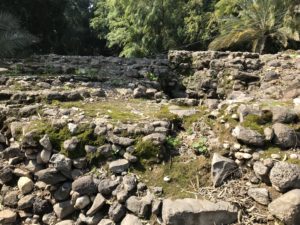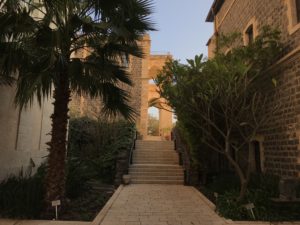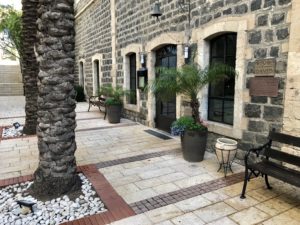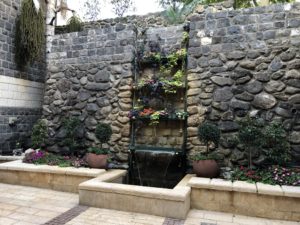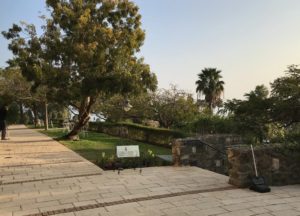Looking ahead at our daily itineraries, I knew I wanted to write about these three things at the same time, even though our visits there were not in this order. So remnants of this post have been sitting off to the side for some days.
The Gospel story of The Visitation has long been one of my favorites. I’ve always thought that the reason it speaks to me lies in the very early memories of my own fatherhood. I’m talkin’ real early. The memories of feeling, and even seeing, the movements of my children in their mother’s womb.
This mosaic depicts Mary making her way up to visit Elizabeth, the mother of John the Baptist, when they were both pregnant. Elizabeth is the tiny figure in the upper right. Luke in his Gospel tells of the baby leaping in Elizabeth’s womb the moment she heard Mary’s voice.  You can see the mosaic above the entrance to the church that celebrates the story of The Visitation.
You can see the mosaic above the entrance to the church that celebrates the story of The Visitation.
Across a courtyard from the church is another wall of many languages. I know the Bible passages on these plaques as The Canticle to Zachariah, the father of John the Baptist. It beautifully foreshadows the role of John and the coming of A Savior. Some know it as the Benedictus. All can read it in the Gospel of Luke, Chapter One.
The Judean Hills of southern Jerusalem are where the sites of The Visitation and the birthplace of John the Baptist are. It is also the area that, in the time of Jesus, was the Road to Emmaus. The story of this road can also be found in the Gospel of Luke, Chapter 24.
When I first went back and looked at this picture I thought, now where is this? I realized eventually it was the passage leading down to the site of the birthplace of John. I also realized it was representative of many of the old staircases we made our way down to the holy and historic sites. They are all well below what is today’s street level.
The cavelike site of the Birthplace of John the Baptist.
These two photos are from the site of the Shepard’s Fields outside Bethlehem. The Angel of the Lord appeared to them, announcing to these lowly men of their day, the birth of A Savior and telling them to “go and see”.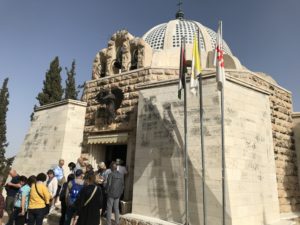
If I remember right, this church is Armenian. When there is not some service taking place there are often different groups taking turns signing Christmas Carols, which we happily joined in on.
A little taste of what Bethlehem looks like today in the area of The Church of the Nativity. Below is the entrance to The Church. Tradition has it the size of this entrance is so all who enter bow before The Lord. More pragmatic people say it’s small because the original gate was filled in to prevent the irreverent types from riding their horses into church. I’m a fan of both ideas.
Inside is probably not what one would expect. Sections of the church and sanctuary are curtained off because excavation of the church site is ongoing. Very recently some mosaic floors were discovered and the work to uncover them is taking place. One can only imagine how they might incorporate this discovery into the present day church. And always, the people, all wanting to visit “the manger scene” of their heads. Our guides both told us after that this was a fairly calm day at this site.
Jesus was born in a stable where the livestock were kept. In His time, the stables were the protective caves on the property. Even today, caves are everywhere in The Holy Land. The manger was one of the troughs where the feed was put. The passage stairs down to the birthplace of Jesus are particularly narrow and low. The reward, ……., well, ……. To write about it is to relive it, which by itself is amazing.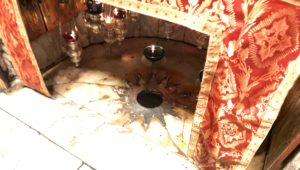
And only feet away, practical thought about the cave makes this the likely spot of the manger that the newborn Jesus was laid in. I know it’s an easy thing for me to say, but I have to say it anyway; everyone whose a Christian should try to come to The Holy Land. I could never express adequately how glad I am that I did. In no small part because of the invitation and urging of some great friends.
I am so doggone well I can’t describe, and hope you all are too. The Peace fo Christ to you.
